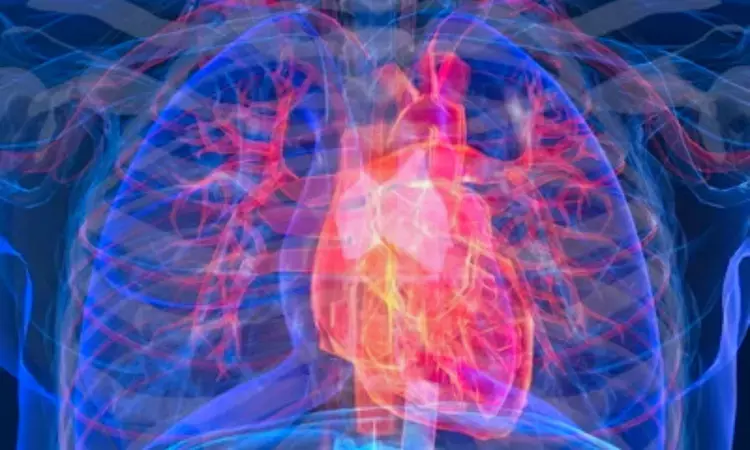- Home
- Medical news & Guidelines
- Anesthesiology
- Cardiology and CTVS
- Critical Care
- Dentistry
- Dermatology
- Diabetes and Endocrinology
- ENT
- Gastroenterology
- Medicine
- Nephrology
- Neurology
- Obstretics-Gynaecology
- Oncology
- Ophthalmology
- Orthopaedics
- Pediatrics-Neonatology
- Psychiatry
- Pulmonology
- Radiology
- Surgery
- Urology
- Laboratory Medicine
- Diet
- Nursing
- Paramedical
- Physiotherapy
- Health news
- Fact Check
- Bone Health Fact Check
- Brain Health Fact Check
- Cancer Related Fact Check
- Child Care Fact Check
- Dental and oral health fact check
- Diabetes and metabolic health fact check
- Diet and Nutrition Fact Check
- Eye and ENT Care Fact Check
- Fitness fact check
- Gut health fact check
- Heart health fact check
- Kidney health fact check
- Medical education fact check
- Men's health fact check
- Respiratory fact check
- Skin and hair care fact check
- Vaccine and Immunization fact check
- Women's health fact check
- AYUSH
- State News
- Andaman and Nicobar Islands
- Andhra Pradesh
- Arunachal Pradesh
- Assam
- Bihar
- Chandigarh
- Chattisgarh
- Dadra and Nagar Haveli
- Daman and Diu
- Delhi
- Goa
- Gujarat
- Haryana
- Himachal Pradesh
- Jammu & Kashmir
- Jharkhand
- Karnataka
- Kerala
- Ladakh
- Lakshadweep
- Madhya Pradesh
- Maharashtra
- Manipur
- Meghalaya
- Mizoram
- Nagaland
- Odisha
- Puducherry
- Punjab
- Rajasthan
- Sikkim
- Tamil Nadu
- Telangana
- Tripura
- Uttar Pradesh
- Uttrakhand
- West Bengal
- Medical Education
- Industry
Cardiac CECT can accurately localize fatty tissue in heart, paving way for better heart treatment strategies: JAMA

USA: A recent cohort study published in JAMA Cardiology found that contrast-enhanced computed tomography (CECT) can help localize fatty tissue in the heart.
The findings revealed that CECT achieved high accuracy in the study that focused on fatty tissue insulating the atrioventricular node and the proximal specialized conduction system (AVCS) from surrounding muscle. This capability could lead to better heart treatment strategies.
“Noninvasive visualization of the AVCS may provide utility in planning for interventional, electrophysiologic, and surgical procedures by providing an anatomic roadmap,” Mirmilad Khoshknab, Hospital of the University of Pennsylvania, Philadelphia, and colleagues wrote.
The AVCS comprises muscle cells responsible for excitatory impulse transmission from the atria to the ventricle -- also known as the conducive myocardium. In cases where the system is infiltrated by fatty deposits, it predisposes patients to heart disease and complications. Previous studies indicate that CECT can identify heart structures by localizing myocardial fat with high specificity.
Against the above background, Dr. Khoshknab and colleagues tested the hypothesis that pre-procedure CECT can accurately localize the AVCS by identifying the fat that insulates the conductive myocardium.
For this purpose, the research team conducted a prospective cohort study conducted at an academic tertiary care center. It included patients with CECT acquired less than one month before atrial fibrillation ablation and electroanatomic localization of the His electrogram signal on electroanatomic mapping (EAM) between 2022 and 2023.
The study's main outcome was the distance from the His electrogram signal to the fat segmentation encompassing the AVCS on CECT, following registration of the images to EAM.
The researchers revealed that among 20 patients (mean age, 66 years; 75% males) in the cohort, the mean attenuation of the AVCS fat segmentation was 2.9 Hounsfield units. The mean distance from the His electrogram to the closest AVCS fat voxel was 3.3 mm.
Myocardial low attenuation on CECT indicating fat deposition at the top of the triangle of Koch was within the registration error range of the intracardiac His signal in all cases.
"The results suggest that CECT could accurately localize the fatty tissue that insulates AVCS from surrounding atrial and ventricular myocardium. It also enhances the safety and efficacy of procedures targeting the conduction system and structures in its proximity," the researchers concluded.
Reference:
Khoshknab M, Zghaib T, Xu L, et al. Noninvasive Visualization of the Atrioventricular Conduction System Using Cardiac Computed Tomography. JAMA Cardiol. Published online July 24, 2024. doi:10.1001/jamacardio.2024.2012
Dr Kamal Kant Kohli-MBBS, DTCD- a chest specialist with more than 30 years of practice and a flair for writing clinical articles, Dr Kamal Kant Kohli joined Medical Dialogues as a Chief Editor of Medical News. Besides writing articles, as an editor, he proofreads and verifies all the medical content published on Medical Dialogues including those coming from journals, studies,medical conferences,guidelines etc. Email: drkohli@medicaldialogues.in. Contact no. 011-43720751


